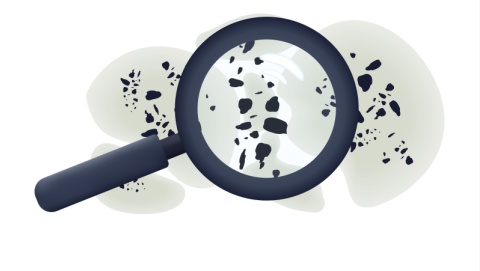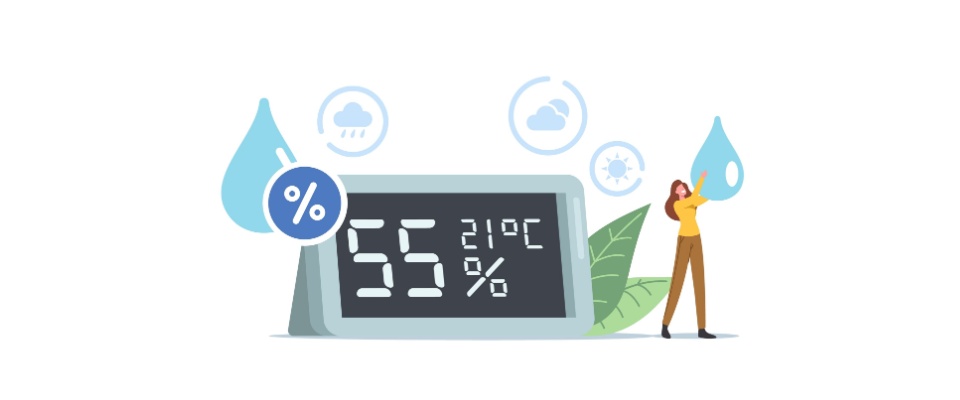Did you come back to your apartment after a long trip only to find black spots creeping up the walls and a musty smell that won’t go away? Mold can wreck your belongings, affect your health, and lead to many questions about who’s supposed to fix it and who’s stuck with the bill.
If you’re dealing with a moldy apartment or trying to avoid one, you may be wondering: Does renters insurance cover mold?
The answer isn’t always simple. Mold can be a tricky issue when it comes to insurance. Coverage depends on how the mold got there, how fast you acted, and what’s spelled out in your renters insurance policy, your lease agreement, and your landlord’s insurance policy.
Let’s break it down.
Why is mold a problem?
Mold is a type of fungus that thrives in damp, dark, and poorly ventilated spaces in apartments or houses, like bathrooms, basements, or behind walls after a leak. Common types of mold in apartments include:

- Black mold (Stachybotrys)
- Aspergillus
- Penicillium
- Or Cladosporium
Some types of mold (like black mold) may cause health problems, especially if you have allergies, asthma, or a weakened immune system. However, any signs of mold should be addressed promptly.
If left unchecked, mold can spread quickly and damage items like clothes and shoes, furniture, decor, or electronics. It can also make your apartment unlivable.
When does renters insurance cover mold?
In most cases, renters insurance may cover mold only if it’s caused by a sudden, accidental event that’s considered a “covered peril.” That includes things like:
- A burst pipe.
- Water damage from putting out a fire.
- Sudden leaks from an appliance like a dishwasher or washing machine.
You’ll still need to check the fine print and act quickly. Most insurance companies expect you to take action to prevent further damage, and they may deny your claim if they think you waited too long.
Also, some renters insurance companies may offer an option for additional living expenses (ALE) coverage. This can help with paying extra accommodation costs if you’re forced to move out of your rental due to a covered peril. You will still want to carefully examine what your additional living expenses coverage includes to avoid any unwanted surprises if you’re forced to move out.
Important: Your renters insurance doesn’t cover the building or structure itself; that’s covered by your landlord’s insurance. Only your belongings may be covered if they’re damaged by mold from a covered incident.
Let’s say you come home from work and notice water pooling under your sink. A pipe has cracked, and water’s been leaking into the cabinet and nearby drywall. You report it to your landlord immediately, and a few days later, you start seeing mold patches creeping up the wall behind the trash can.
You snap photos, contact your insurance company, and file a claim right away. Since the mold clearly resulted from a sudden, accidental water leak, which your renters insurance policy labels as a covered loss, your policy might cover the cost of cleaning or replacing your damaged items, like a moldy rug or even furniture.
When doesn’t renters insurance cover mold?
Unfortunately, renters insurance likely won’t help if mold grows from something considered preventable or related to long-term maintenance issues.
That may include:
- Long-term leaks (for example, a leaky window) that were neglected or not fixed.
- Poor ventilation in your bathroom or kitchen.
- Humidity that builds up over time.
- Mold that forms while you’re away for weeks without airflow or climate control (especially in a humid apartment).
Imagine you leave your apartment for the summer. A few months later, you return and find mold spreading on the walls, furniture, and even inside your closet.
You file a claim with your renters insurance, hoping it’ll cover the damage. But it gets denied. Why? Because the mold wasn’t caused by a sudden accident or a one-time event. Instead, it built up gradually while you were gone. Even if you didn’t cause it yourself, most insurance companies won’t cover damage they see as preventable or the result of long-term neglect.
Who may be responsible?
It depends. Landlords or property managers are usually responsible for maintaining the building and fixing problems like leaks, roof damage, or broken HVAC systems that cause moisture buildup. If you report a problem and they ignore it, they may be held liable for any resulting mold damage.
However, if the mold comes from how you’re living in the apartment (e.g., drying clothes indoors without ventilation or not reporting a slow leak), renters insurance may not help you cover any damage costs.
Make sure to check your lease
Some leases include mold addenda that lay out who’s responsible for what, and what steps you’re expected to take to prevent mold. Take photos, document all issues, and report problems to your landlord in writing.
How to prevent mold in your apartment
Here are a few practical steps to help you avoid getting stuck in a moldy apartment:
Ventilate your space constantly
Ensure your apartment is well-ventilated, especially in high-moisture areas like the bathroom, kitchen, or laundry room. Open windows when the weather allows and keep interior doors open to improve airflow between rooms.
Use a dehumidifier
Dehumidifiers pull moisture from the air and help maintain balanced humidity levels indoors. Use one especially during rainy seasons or if you live in a humid climate.

Monitor humidity levels
Check your apartment’s humidity regularly using a hygrometer (a small humidity meter). The recommended indoor humidity level is between 30% and 50%. Maintaining this range helps discourage mold growth.
Run exhaust fans
Run your bathroom exhaust fan during and after showers for at least 15 to 20 minutes. If there’s no fan, crack a window or leave the bathroom door open after showering to let moisture escape.
Don’t dry wet clothes indoors
Avoid drying laundry inside without proper ventilation. If you must, do so near a fan or open window and space out your clothes to allow airflow.
Keep the AC running when you’re away
If you’re leaving for more than a few days, set your AC on a timer or a low setting to manage humidity. If possible, use a smart thermostat to maintain airflow and prevent damp conditions while you’re gone.
Clean regularly
Dust, dirt, and moisture can provide ideal conditions for mold to grow. Clean around windows, behind furniture, and in damp areas with mold-killing agents like white vinegar or hydrogen peroxide.
If you notice any small spots of mold, clean them immediately and dry the area thoroughly to prevent spreading.

Mold is a signal that something’s wrong in your living space. It’s important to understand what renters insurance covers when it comes to mold and what it doesn’t, in case it ever becomes an issue. Combined with regular apartment maintenance and acting quickly when moisture issues arise, this knowledge is one of your best lines of defense.
